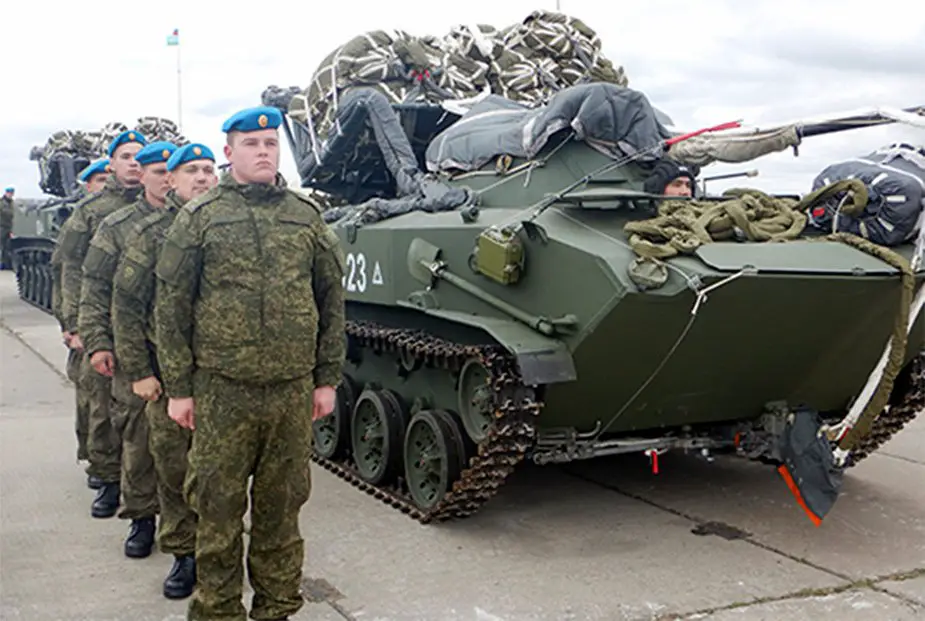The Syrian combat experience changed the engagement tactic of the Russian Ground Forces. Now, even motorized rifles train to helicopter assault in adversary rear. In the future, all Russian infantry units will be trained to operate in a tactical airborne assault. However, the transition to total air mobility encounters problems, the Izvestia daily writes.

The Russian infantry will increasingly privilege air assault (Picture source: function.mil.ru)
The recent Russian exercise in South Ossetia comprised a new component. For the first time, the tactical airborne assault was trained at Dzartsemi range. But the helicopters delivered ordinary motorized rifles instead of airborne troops. It is no longer exotic, as similar exercises were held in the mountains of Abkhazia and Armenia.
The Southern Military District has launched a large-scale experiment since December 2018 to provide air mobility to the Ground Forces. Each motorized rifle and marine battalion has companies which train helicopter landing and operating far from the main forces. In 2013, the district lost its air assault brigade which was subordinated to the Airborne Forces like all similar units. However, the district command retained the need for higher air mobility.
In August 2008, the airlifting of troops across the Caucasian range was a major problem. Even the airborne troops reached the combat area on the third day of hostilities. It is impossible to change the geography which makes South Ossetia and Abkhazia hard-of-access areas. Crimea is connected with Russia by a bridge and ferry service. It is no wonder that the Southern Military District lobbied an experiment to restore parallel air assault units.
The tactic of light infantry vertical assault from helicopters is not new. It has clear advantages in ordinary combat and in operations against militants and terrorists. The concept is usual for the Soviet and post-Soviet army. Tactical assaults from helicopters were successfully used in Afghanistan and other hotspots. However, a long degradation period of the armed forces and army aviation scrapped air mobility. There was a lack of operational hardware for the troops and Airborne Forces.
The Syrian experience pushed the Defense Ministry to restore air mobility. There was one but very successful operation of the kind. On the night of August 12, 2017, a Syrian unit backed by Russian military advisers landed from Mil Mi-8 helicopters 20 kilometers into the rear of militants. It encountered no resistance and seized the key settlement of Al Qadr.
The night assault was covered by Russian Kamov Ka-52 helicopters which successfully fired missiles at adversary tanks and pickups. The surprise assault confused all plans of the militants and compelled them to flee from dozens of square kilometers without usual resistance. The operation was held when current Aerospace Forces Commander Sergey Surovikin was in charge in Syria. The experiment was initiated by current Southern Military District Commander Colonel General Alexander Dvornikov who headed the Russian force in Syria.
Such operations are an action model for the new units of motorized rifles and air assault forces. Paratroopers will get new hardware. Vostok-2018 maneuvers demonstrated wheeled vehicles, quads and even armored automobiles for helicopter airlifting.
Motorized rifles will not get the hardware and will have to operate their usual arms but without armored personnel carriers, infantry fighting vehicles, etc. They will be able to airlift 120mm mortars. The upgraded communication means will help the rifles be in constant contact with the command and neighboring units and become a part of the single automatic troops control system. It is important for interacting with artillery and aviation. In theory, they will be able to aim precision strikes by cruise and ballistic missiles.
Helicopters pose a problem for the new concept. In the past decade, the Russian army aviation received over 700 helicopters and many of them were supplied to the Southern Military District. Upgraded helicopters comprise three-fourths of its strength. It would be impossible to develop air mobility without them.
Still, there is a lack of helicopters to ensure the needs of all airmobile units. Dozens of rotorcraft are necessary to airlift a tactical company force. At Vostok-2018 maneuvers, an air assault battalion was airlifted by 45 Mil Mi-8AMTSh helicopters and a pair of heavy Mil Mi-26. They were covered by 14 Mil Mi-24s and eight Kamov Ka-52s. It is no wonder that the Airborne Forces plan to have their own helicopter brigade for such operations.
Massive air mobility of motorized rifles will demand to strengthen the army aviation of the Ground Forces or at least of the Southern Military District. There are all the opportunities for that. The Russian aircraft industry can produce the hardware for the army in any required volume, however, there is still a lack of helicopters in the troops. Economic difficulties put massive additional helicopter procurement in doubt, but the launched experiment cannot be accomplished without it, the Izvestia said.
© Copyright 2019 TASS / Army Recognition Group SPRL. All rights reserved. This material may not be published, broadcast, rewritten or redistributed.














